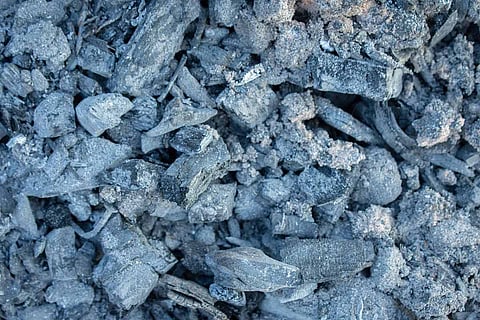

A new report has found that coal fly ash pollution was rampant in India in 2020-21 despite the COVID-19 lockdown and found at least 17 major incidents that occurred in seven states from April 2020 to March 2021. The report was released by Healthy Energy Initiative India and Legal Initiative for Forest and Environment (LIFE). The report titled “Coal Ash in India – Vol II: An environmental, social and legal compendium of coal ash mismanagement in India, 2020-21” is a continuation of a similar report released in 2020 that documented 76 coal fly ash related accidents across the country between 2010-2020 and provided an overview of the management of coal fly ash in India, and the threat it poses to human health and environment.
The report analysed the media reporting around coal fly ash accidents and found that incidents were reported from seven states including Madhya Pradesh, Tamil Nadu, Odisha, Chhattisgarh, Jharkhand, West Bengal and Maharashtra. “Ash pond collapse, air pollution from ash ponds and discharge of coal fly ash into rivers, streams and other water bodies were the most prevalent incidents, indicating the dismal state of coal fly ash management in the country, the report stated, adding that most of these locations are regions where the coal fly ash disposal is a perennial problem, and leaks and accidents are routine.
“While big cities like Delhi celebrated clean air and blue skies during the COVID lockdown, we found regions like Korba in Chhattisgarh, Ennore and Seppakkam in North Chennai that reported multiple incidents and accidents related to fly ash mismanagement. We also found residents from coal hotspots reporting that many power companies used the COVID-19 lockdown to dump waste indiscriminately in the water bodies, villages and around the highways, causing irreparable harm to the environment and public health,” said Pooja Kumar of Healthy Energy Initiative India.
“Korba has witnessed unprecedented coal fly ash pollution in the last one year, we have been living here for decades but have never seen a sight like this before. The power companies have used COVID-19 restrictions to dump coal fly ash wherever they could. Piles of fly ash can be found along the entire highway and ring roads and in villages everywhere. With summer winds, we are seeing the entire city covered in fly ash and we are breathing fly ash,” said Shri Laxmi Chauhan, an activist from Korba, Chhattisgarh. Despite several complaints, no action has been taken on the errant companies, she added.
The report also analysed the news media reports on coal fly ash and noted a shift towards in-depth coverage of the environmental and community impacts of coal fly ash. It was found that media reporting of coal fly ash in 2020-21 focused on people and biodiversity over the often used “development” narrative of the industry. According to the report, “media coverage of research studies and reports published by leading universities and think tanks present a multidisciplinary approach in understanding the impacts of coal fly ash. Similarly, coverage of the people’s struggles around coal-based industries, seeking remediation of contaminated sites, clean up, reduction of pollution and compensation for loss of quality of life and livelihood were also prevalent.”
Advocate Ritwick Dutta of Legal Initiative for Forest and Environment said that coal ash is the most ignored threat to the health of the community and the environment. “India's regulatory mechanism has failed to deal with the problem which continues to increase every passing year; while courts are yet to hold a company criminally liable for the toxic pollution caused by callous approach of power companies,” he added.
This report also offers an in-depth legal and policy analysis and gaps of implementation on the emerging trend of courts imposing environmental compensation for environmental violations on the issue of coal fly ash. The report points out that the legal position is clear with respect to the liability of project proponents responsible for breach of fly ash – they are absolutely liable for both the damages and cost of restoration. “Despite this clear judicial precedent, the Courts and Tribunal have rarely fixed the liability on the violators which reflects both the damages caused and the cost of restoration. One of the reasons for the same is that in most instances the cost of calculating the damage caused and cost of restoration is left to be decided by a third party to be selected by the project proponent itself. Given the fact that it will be the violator who will be deciding the agency which will calculate the damages, it is unlikely that a fair assessment of damages will take place,” the report said.